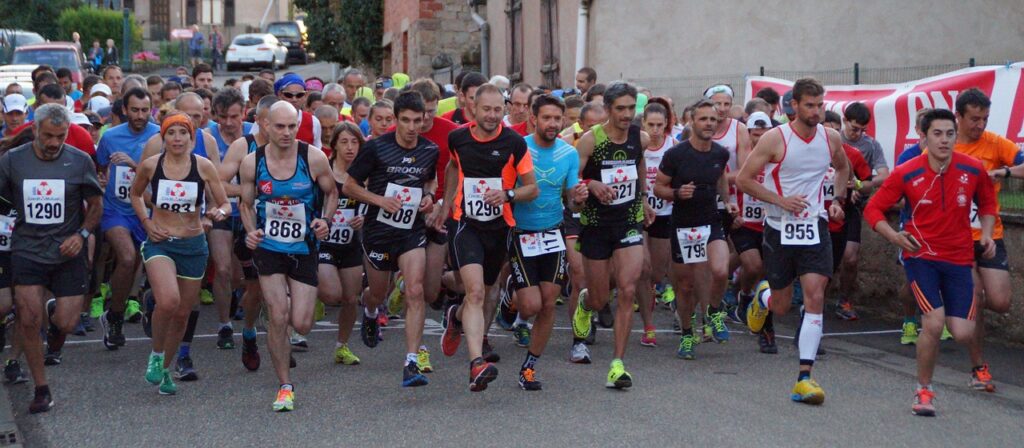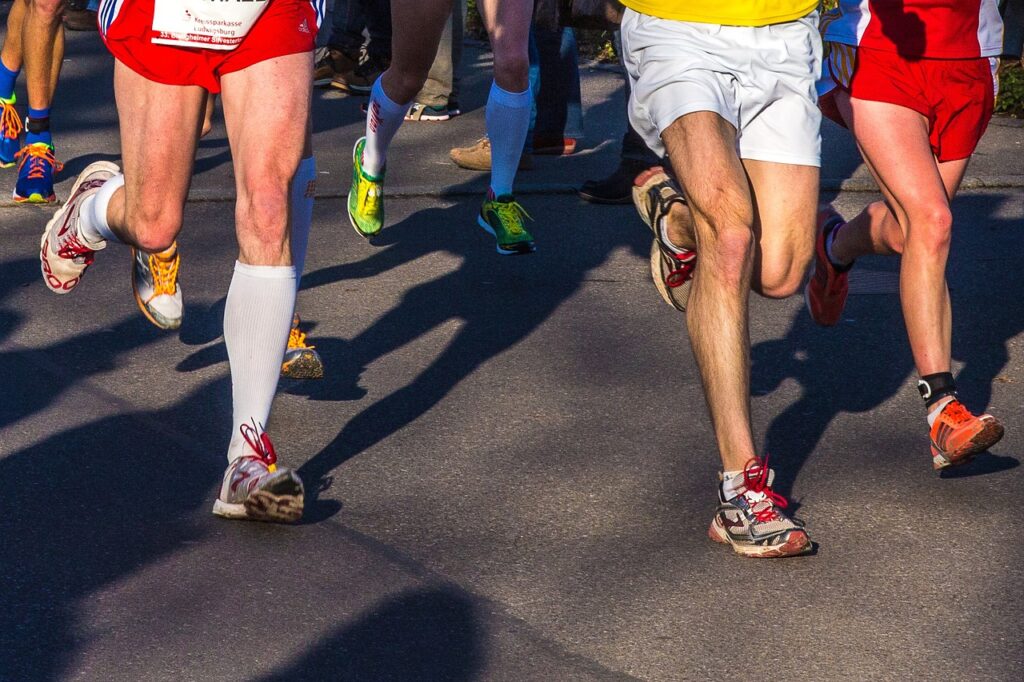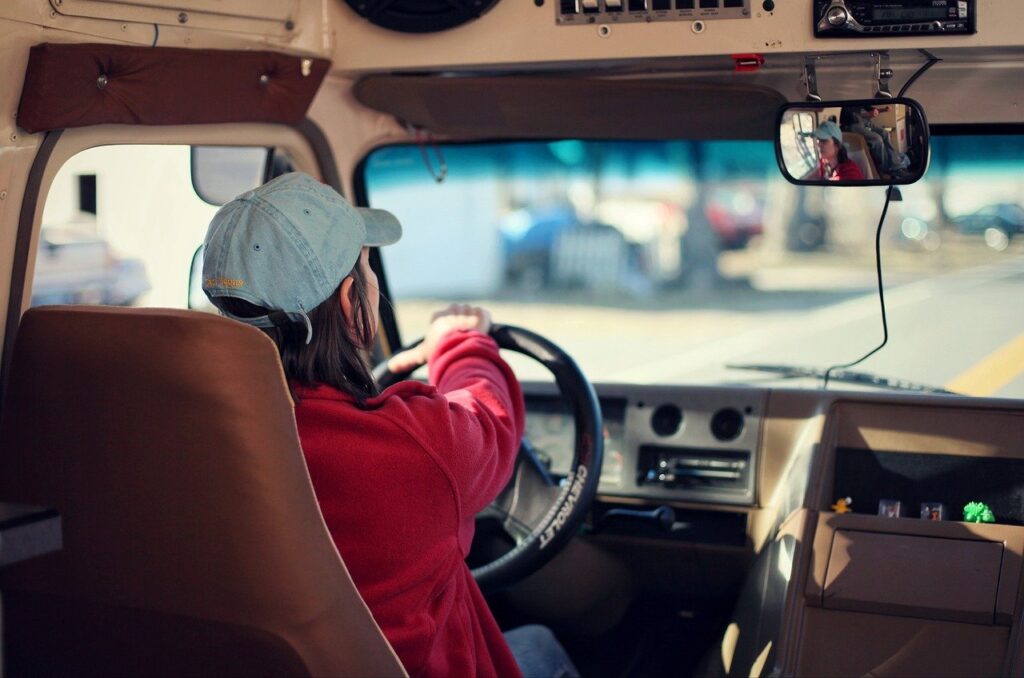When we screw something up, it is an “epic fail”. In a marathon, when we screw up, not only one but more than that, we call them “epic marathon fails”.
And yet, marathon is a big event to us. It represents an achievement or a big milestone when we complete it. – That’s why we often vision ourselves running a marathon for our new-year resolution.
We train hard; we stick to the diet. And of course, we stick to this routine for a few months just to make sure we could complete the marathon!
We visualize ourselves running at our best and cross the finish line with our personal best. But, does this always happen?
The truth is, there is always something that we all HATE in marathons!
If you ran a MARATHON or HALF MARATHON, you might be familiar with the following epic marathon fails. – Why? Because they are common in marathons!
So, let’s look at these epic marathon fails we all hate and the possible solutions.
1. Too fast too soon
You were uplifted while waiting for the countdown. Once it reached zero, your heart pounded faster and you were ready to RUN!
You felt like you had infinite amount of energy to run. So, you started full speed and you surpassed other runners. – This felt great, didn’t it?
You wondered why others ran so slowly. But, your great moment didn’t last long.
You started to struggle even for, say, 5km run. Then, other runners started outpacing you, one by one.
What the hell? And you gasped for air……
Solution
Mistake No. 1: run too fast too soon.
Remember, running a marathon / half marathon is about endurance, not speed. – Except for experienced or elite marathoners.
So, don’t push too hard while you start running. First, your body is not really for the fast speed yet. Second, it is energy taxing.
Understand your rhythm. You need to run at STEADY PACE. If you pace is 6km/h, stick to it. Or 10km/h, go ahead. – It all depends on your fitness level, so long you run comfortably.
It’s tempting to run faster to match with other runners’ pace. I mean, who likes being left out? But, it does more harm than good.
We thought elite runners run at full force due to their incredible speed. The truth is, they run at their normal pace (ie. their “jogging” pace).
Don’t be the runners who showcase their running speed. This might make you unable to finish the run.
2. “Kiss” other runners

You know what? Running at the beginning of a marathon is like walking at a crowded subway station.
There were overwhelmingly many runners and you literally run “sandwiched” amongst the crowd.
Guess what? You accidentally hit the runner in front of you. Or the runner behind you hit you……
That was a mess. Could we avoid this? – Yes, of course!
Solution
Traffic rules are also applicable while running marathons. It’s just like driving or walking on the roads.
There are both slow and fast lanes.
While you run at your own pace, you should always stick to the slow lane. Likewise, run on fast lanes when you overtake runners. – The side, though, depends on the respective countries.
In fact, this is part of running etiquette. You can familiarize with the running etiquette before any marathons so that you won’t offend other runners.
3. Side stitch
You had run for countless km so far. You sweated so much until your shirt was all wet. But, you were not tired yet……
You started to speed up to hope that you could run your personal best. Then, your confidence elevated when you outpace other runners.
But, you felt a sharp abdominal pain. The pain was so intense that you had no choice but to slow down or even walk.
Meanwhile, you saw other runners surpassing you while WALKING……
Causes
What you experienced was a SIDE STITCH. This could happen on either left or right abdomen.
The exact cause is unclear. But, many believe that it is due to diaphragm muscle spasm. Some claim that dehydration might cause side stitch, too.
In fact, side stitch is awful yet common in running.
Solutions
Before your marathon / half marathon, remember to do simple stretching to warm up your body. Hydrate yourself and have light meal (avoid heavy meal) 2 or 3 hours before the run.
But if you have side stitch during the marathon, there are some simple ways to ease the pain:
- Press the side of your side stitch
- Try to take deep breath
- Slow down or walk (depending on the discomfort)
4. Diarrhea
While running, there was a big pile of “chocolate milkshake” pouring down from the shorts of the runner in front of you. And it was dripping.
OMFG! You couldn’t believe what you witnessed. Worse still, you stepped on the chocolate milkshake!
You knew that was a DISASTER. That runner might think of committing suicide……
Or, you suddenly had stomach ache. In fact, you had diarrhea and you needed to go to the bathroom.
But, you could find any bathroom, and maybe you could use it in 4km. You started to panic and it worsened your diarrhea. The chocolate milkshake might come out soon……
Causes
This is runner’s diarrhea. And it’s the nightmare while running.
There are some causes too, such as:
- Stress and anxiety
- Changes in hormone secretion of intestine
- Decreased intestinal blood flow
Runner’s diarrhea is extremely common. In fact, running stimulates bowel movement.
That’s why some runners need to use the bathroom during or after their run.
Solutions
Try to use the bathroom before the race. Avoid eating high fibre and dairy products food before the run, as these encourage bowel movement. And try not to eat big meals within 2 or 3 hours before the run.
And it’s normal if you have the urge to use the bathroom. Since bathrooms are available at most of the checkpoints, use them before it’s TOO LATE. – Don’t place the bomb until disaster finds you!
5. Nausea
That was your first marathon / half marathon. You wanted to complete it so badly so you could tell yourself that you had achieved a big milestone.
Meanwhile, you gave yourself too much of stress……
And you ran very hard. You were tensed. You just wanted to run the fastest as you can.
Then, you hit your maximal point. You felt NAUSEOUS. You had a strong feeling to puke.
While you were looking for the bathroom, it was too late. So, you had no choice but to stop awhile and puke beside the road.
You felt clumsy because other runners saw you puking. Nevertheless, you felt a great relief and you continued running like nothing happened!
Causes
Try to ask yourself the following questions:
- Am I running too hard?
- Have I eaten too full or taken too much of water?
- Am I too nervous or stressed out for this run?
These could cause nausea. Though it’s uncomfortable, it’s usually harmless. In fact, we feel much better after we throw up.
Solutions
Try the following to avoid nauseous in marathons / half marathons:
- Don’t stress too much, take it easy
- Drink enough water (don’t dehydrate or overhydrate)
- Avoid high fibre food, solid protein and high fat food before the race
6. Muscle cramp

There was a distance marker of “36 km” beside the road. Ok, you did a brief mental calculation. – 36 down, 6 more to go……
You had achieved a big milestone so far. Although you were deeply exhausted, you continued running to complete the remaining 6km. Based on your pace, you just needed another 45 minutes.
Suddenly, you felt an acute calf pain. That pain was so strong that you had to slow down your pace and walk.
But, it didn’t help. So, you stopped and sat beside the road, while watching other runners surpassing you with ease.
However, you were not alone. You saw some runners having the same issue too! You were “glad” as you had company.
After a brief rest, you stood up and start jogging again to finish the remaining 6km……
Causes
Like side stitch, diarrhea and nausea, muscle cramp is also very common in marathons.
The causes are electrolyte imbalance and dehydration, causing improper regulation in our body.
But, some argue if this is the case, why we only have muscle cramps on our legs but not our arms or torso.
Hence, there could be another reason of muscle cramp. That is the misfiring of our nerve signal due to muscular fatigue. And this explains why our leg muscle cramps, instead of our biceps or core muscles.
Solutions
Before the race, you could hydrate yourself and stretch your body. You could also eat bananas, avocados, etc. While running, remember to always hydrate yourself.
That’s why they have checkpoints. Volunteers provide both water and isotonic drinks. Grab and drink them at the checkpoints.
If you experienced muscle cramp, you could do the following:
- Slow down or walk (depending on the degree of discomfort)
- Stretch the cramped muscle
- Use muscle cramp spray (volunteers will have this and help you spray usually)
7. “Kiss” vehicles
In typical marathon events, organizers will set up roadblocks to clear the traffic. So, policemen and volunteers are there to help monitor the traffic to ensure runners run safely.
Hence, many runners keep their vision downward while running, instead of looking forward. That doesn’t mean we could let our guard down.
In fact, some reckless drivers or motorists might invade the running route and hit you accidentally. – It’s rare, but it happened!
3 runners were hit by a car and injured during Kuala Lumpur Standard Chartered Marathon 2019. It was a “hit-and-run” accident.
Solutions
Remember to run like your usual walk. Observe the surrounding and check the “traffic” when crossing the road. – There might not have any vehicle, but who knows?
Also, pay attention to the signal from the policemen and the volunteers. They will direct you to the right route.
If you entered the wrong route, you might be disqualified!
8. Toe pain

You bought a new pair of running shoes for your first marathon. – Nice fit and tight running shoes.
You imagined yourself completing the marathon with the new running shoes. Also, you wanted to share on the social media and hashtag #newshoesformy1stmarathon.
It turned out that your first marathon was a mess. Your feet hurt so badly and you had so much pain on your toes! – This totally ruined your plan……
You couldn’t take it anymore. You took off your shoes during the race and checked what was going on.
Well, your toes were swelling and bleeding. You noticed your toe nails were going to fall off. And you had 15km more to go. FML……
Causes
First, we need some time to get used to the new running shoes. – So, wearing new running shoes for a marathon is a bad idea.
Second, wearing tight running shoes increases the chance of toe injury. Think about this. While running, our toes constantly hit the tip of the shoes. This friction causes toe pain or blisters, or even toenail fall off.
Solutions
Always wear the usual running shoes for the marathon / half marathon. Even experienced runners don’t wear new running shoes for the race.
Next, make sure always wear a “slightly” bigger running shoes. Ensure there is some space between the toes and the tip of the shoes. And usually the gap is the width of your index finger.
9. Nipple chafing
Amongst these epic marathon fails, this is exclusively for guys.
You never had this feeling before, but you DID! Your nipples hurt like hell.
And you looked at your shirt. That was blood. Jeez, your nipples were bleeding!
And the bleeding marks were damn embarrassing. You started to be self-conscious. You started to check if anyone noticed the bleeding marks on your shirt……
Worse still, a photographer was taking pictures of runners. You purposely avoided his vision so he couldn’t take a picture of you.
Solution
The constant friction between your nipples and the shirt causes nipple pain and bleeding.
Obviously, you need to do something to reduce the fiction. And that’s simple.
Simply use tape and stick on your nipples. While this looks funny, this works like a charm.
Plus, nobody notices. Why not?
10. Sweeper bus

You finally reached the 38km mark. But, you were “dead” literally. You couldn’t even jog or walk properly with your jelly legs, and you saw others surpassing you.
Since you had 4km more, you put all your energy to continue and complete your first marathon.
While you were dragging your body, you noticed a sweeper bus approaching you.
“Oh no!” That’s the nightmare for all marathoners! It’s just like noticing a tsunami approaching you while you are at the beach!
So, you tried your best to “escape” the sweeper bus but to no avail. In the end, you, along with the slow runners, were called to get on the bus.
Utterly heartbroken, you felt like a total loser. All the hard works, training and diets were all wasted. And this was your reward. – Sitting inside the bus to cross the finish line, what a joke!
You promised never signing up for any marathon again. Never!
Solution
Well, there’s no physical solution for this. However, you could change your mindset.
Although you couldn’t finish your first marathon or half marathon, you have run 35km or maybe 17 km, for example. It’s still a great achievement. Many people don’t even bother to try, but not you.
Be kind to yourself. Let yourself feel the sadness and frustration. Then, reflect what you could do to improve for your next marathon.
You know what? Some people can laugh about it. Yeah, they can’t finish the marathon either, but they cheer themselves for what they have done. – That’s the spirit that you need.
11. Collapse
Or, you continued running and finally approaching the finish line. Instead, you were sprinting to complete your first marathon.
Triumph awaits! Once you crossed the finish line, you instantly stopped running as you were too excited.
However, you felt dizzy and lost balance. While trying to balance yourself, you failed to do so and collapsed. Luckily, you didn’t pass out.
Cause
Collapse after crossing finish line is due to the sudden halt in running. That creates a sudden drop in blood pressure due to large volume of blood to the legs. – And this is Exercise-Associated Postural Hypotension, aka EAPH.
EAPH is usually benign. And the symptom usually fades away once the blood pressure stabilizes.
This, however, isn’t the same case as collapse during the race. That is hindrance of cognitive and motor functions. And that needs immediate medical attention.
Solutions
Once you cross the finish line, don’t stop running immediately. Instead, slow down and jog to stabiliz blood flow and pressure.
Or, if you still experience dizziness, try to sit or lie down and lifts your legs. This makes the blood flow to the heart and the brain. The dizziness should fade away.
Final thought: epic marathon fails
Running a marathon / half marathon is a great achievement. That’s why many runners, even beginners, want to challenge themselves by signing up for marathons.
Runners put a lot of effort in training and diet. Their ultimate goal is to complete the marathon. So, they have this “perfect” marathon in their mind.
But, runners can be quite clumsy during the race. Numerous factors could hinder runners from achieving their goals. That’s why those epic marathon fails suck!
Despite that, we could avoid or minimize those epic marathon fails by having proper understanding. From there, we know the solutions.
Don’t be discouraged by these potential epic marathon fails. Follow your heart and run your first marathon!
Relevant posts
